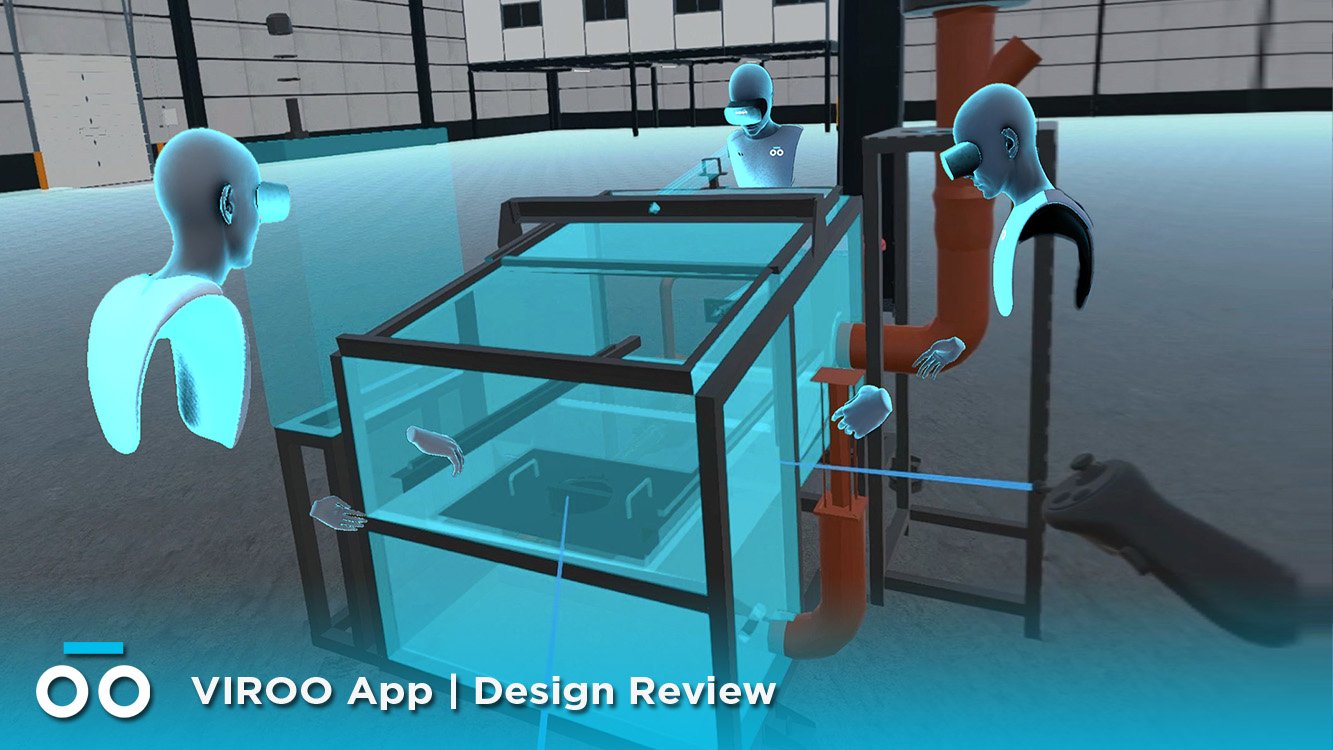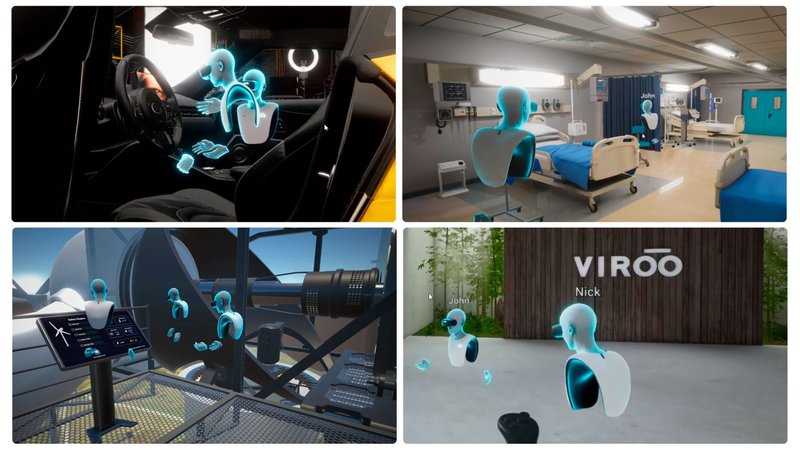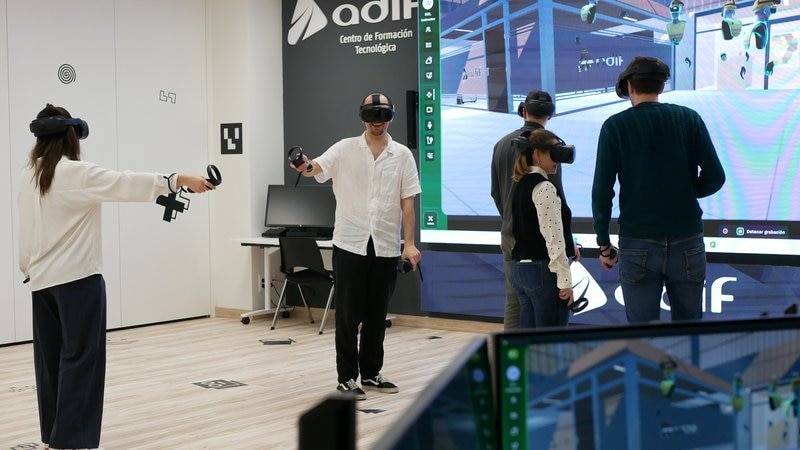From Prototype to Product: How XR and Digital Twins Are Driving Smarter Innovation Across Industries

AEC | Education | Manufacturing | Collaboration | Design/Visualization | Training/Simulation | Articles
9 min read
Introduction: The Next Phase of Innovation
In today’s high-stakes digital economy, businesses and institutions face a common imperative: accelerate innovation or risk falling behind. Whether it’s designing a next-gen manufacturing process, training a specialized workforce, or coordinating multi-stakeholder infrastructure projects, the demand for faster, smarter, and more collaborative solutions has never been greater.
Enter digital twins: virtual replicas of physical objects, systems, places, or processes that enable teams to train, test, and optimize performance without touching the actual system. And with the advent of extended reality (XR), colleagues can now step inside digital twins and get more done, together, from remote locations.
What Are Digital Twins, And How Is XR Changing the Game?
Digital twins aren’t just 3D models; they’re capable of being powered by real-time data and designed to closely simulate the behavior and performance of their real-world counterparts. Originally developed for manufacturing and aerospace, digital twins have become a key tool in engineering, maintenance, and training, allowing teams to test ideas, predict failures, and collaborate remotely.
A typical digital twin could be anything from a CAD-based 3D model to real-time sensor data from IoT devices. They are powerful, but traditional interaction has been limited to flat screens and desktop interfaces. That’s where XR takes things to the next level.
An XR-enabled digital twin is immersive. It places users inside the model, at 1:1 scale and in three dimensions. Users can walk through it, interact with it, and collaborate with others in real time.
By bridging the physical and virtual worlds, XR digital twins create a shared spatial context that enhances understanding, improves communication, and accelerates problem-solving. And that context is quietly revolutionizing the way we engineer, train, and scale innovation.

What Business Needs Are Driving the Shift to XR-powered Digital Twins?
There are multiple pressures driving industries to adopt XR-enabled digital twins:
- Need for faster prototyping: Also known as “time-to-market compression.” As innovation cycles shrink, prototyping must happen alongside planning, not after.
- Need for better collaboration with a remote, distributed workforce: Global teams need a common digital “space” to ideate, iterate, and test together.
- Need to upskill workforce: The growing skills gap in industries like manufacturing, defense, and healthcare demands immersive training at scale.
- Need to reduce complexity and risks: From aerospace to energy, the cost of mistakes is too high for traditional trial-and-error approaches.
While digital twins address these demands, they lack the human element needed to interpret spatial context and intuitive insight. That is where XR enters the equation. By allowing users to walk through a digital twin and collaborate in full-scale virtual environments, new possibilities for design and collaboration are unlocked.
Shared XR Infrastructure: A Game-Changer
The real breakthrough, however, is not just in the technology itself, but in how it’s being deployed.
Through a joint solution between HTC VIVE and Virtualware, organizations now have access to XR infrastructure that transforms any room into an immersive innovation hub.

At the heart of this model is VIROO, Virtualware’s enterprise-grade XR platform built on open standards for integration with engineering software, CAD tools, and training systems. Paired with HTC VIVE’s Business+ suite and enterprise XR headsets, room-scale tracking, and optional private 5G (via HTC’s REIGN CORE), VIROO allows teams to collaborate in person or virtually with unprecedented fidelity.
Even better news? These systems can be deployed in just a few days without the need for major construction or IT overhauls. The result is a scalable, future-ready platform that unites education, research, and industry development under a single, immersive infrastructure.
The Business Impact
XR and digital twins aren’t just technical upgrades; they’re strategic investments that directly impact KPIs:
- Reduced downtime and errors: Teams can simulate workflows and validate systems before real-world deployment.
- Shorter development cycles: Virtual prototyping speeds up design feedback and approval loops.
- Enhanced training outcomes: Immersive content leads to higher retention, faster ramp-up, and safer practices.
- Scalability and repeatability: Shared infrastructure allows organizations to replicate programs across locations with minimal friction.
Perhaps most importantly, these shared XR platforms enable a hybrid workforce model where location is no longer a barrier to collaboration, innovation, or training.
Why Now: Scaling XR Beyond the Pilot Phase
XR and digital twins have crossed the chasm from early experimentation to mainstream adoption. What’s changed?
- Open standards like OpenXR: Make systems interoperable with existing software tools.
- Pre-integrated solutions: Reduce setup time from months to days.
- Private 5G and enterprise Wi-Fi integration: Ensure performance at scale.
- Growing developer ecosystems: Make content creation more accessible.
Organizations are no longer asking “ should we invest in XR?”; they’re asking “ how fast can we scale?”
And with the right infrastructure in place, the answer is: faster than you think.
What Does This Mean for You?
We’re entering a new phase of digital transformation, one where XR-enabled digital twins are core business infrastructure, not side projects. They are closing the gap between digital and physical, empowering global collaboration, and enabling faster, more informed decision-making.
HTC VIVE and Virtualware have built a platform that’s ready to deploy, easy to scale, and already driving results. You can download the complete solution overview here.
Ready to step inside the future of engineering, collaboration, and training? Fill out the form below to learn more about the HTC + VIROO Virtual Rooms solution.